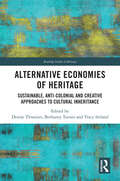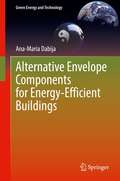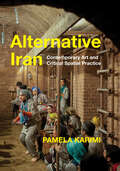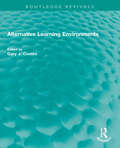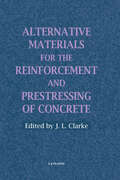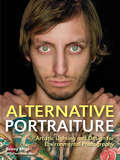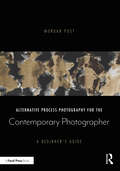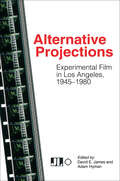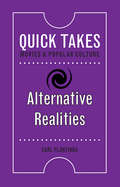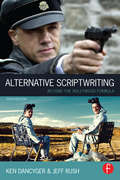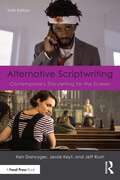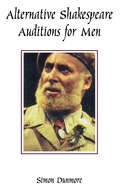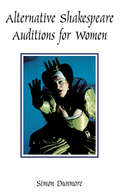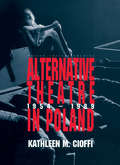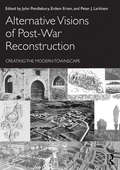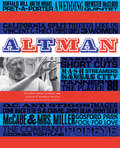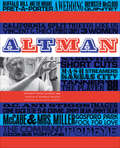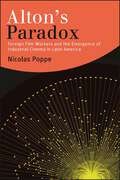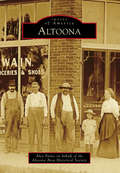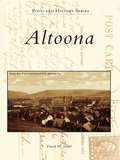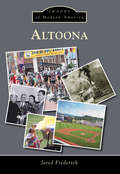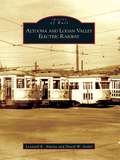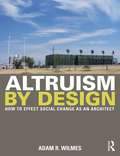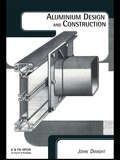- Table View
- List View
Alternative Economies of Heritage: Sustainable, Anti-Colonial and Creative Approaches to Cultural Inheritance (Routledge Studies in Heritage)
by Denise Thwaites, Bethaney Turner and Tracy IrelandAlternative Economies of Heritage is a groundbreaking edited volume that critically evaluates how the ‘work’ of heritage can be reimagined, as a multifarious field of thought and action, to resist the reductive economies of colonial capitalism.In a global context of cultural financialisation and ecological crisis, where sustainable, anti-colonial and creative approaches are required to solve urgent problems, this volume provides readers with an enriched understanding of heritage as a transforming and multidisciplinary domain, which continues to question what is valued, discarded or shared with future generations. Bringing together researchers from the academy and industry, and from varied international contexts, this volume asks how does ‘heritage’ – as a complex intersection of contemporary practices with their own diverse histories – recognise and circulate cultural value between generations and communities? This volume brings together critical and creative perspectives from 29 authors, showcasing diverse, coexisting heritage economies across six continents that offer new horizons for cultural inheritance. It also platforms perspectives from professional and grassroots community-based heritage practitioners, which may be of interest to non-academic readers from not-for-profit and public sectors.Readers of Alternative Economies of Heritage may include students and scholars of heritage and museum studies, contemporary art, urbanism, environmental humanities, archaeology, anthropology, digital humanities and Indigenous studies, among other disciplines.
Alternative Envelope Components for Energy-Efficient Buildings (Green Energy and Technology)
by Ana-Maria DabijaThis book examines ways of saving energy by using green roofs and facades, solar devices such as building-integrated photovoltaics (BIPV), and thermal solar panels, as components of energy-efficient building envelopes. The author takes an interdisciplinary / multidisciplinary approach to the subject that analyzes several different scientific fields connected to building research—sustainability, sustainable architecture, energy efficiency in buildings, and building envelopes—while approaching other collateral domains, including history, archaeology, botanics, physics, engineering, and landscape architecture. Alternative Envelope Components for Energy-Efficient Buildings will be a welcome resource for researchers, students, and postgraduates in the fields of energy, building materials, and renewable energy, as well as architects, engineers, and specialists in industries related to building products.Looks at the impact of building envelopes on energy usage;Offers readers an introduction to the principles of sustainability;Presents passive and active approaches to using solar devices.
Alternative Iran: Contemporary Art and Critical Spatial Practice
by Pamela KarimiAlternative Iran offers a unique contribution to the field of contemporary art, investigating how Iranian artists engage with space and site amid the pressures of the art market and the state's regulatory regimes. Since the 1980s, political, economic, and intellectual forces have driven Iran's creative class toward increasingly original forms of artmaking not meant for official venues. Instead, these art forms appear in private homes with "trusted" audiences, derelict buildings, leftover urban zones, and remote natural sites. While many of these venues operate independently, others are fully sanctioned by the state. Drawing on interviews with over a hundred artists, gallerists, theater experts, musicians, and designers, Pamela Karimi throws into sharp relief the extraordinary art and performance activities that have received little attention outside Iran. Attending to nonconforming curatorial projects, independent guerrilla installations, escapist practices, and tacitly subversive performances, Karimi discloses the push-and-pull between the art community and the authorities, and discusses myriad instances of tentative coalition as opposed to outright partnership or uncompromising resistance. Illustrated with more than 120 full-color images, this book provides entry into unique artistic experiences without catering to voyeuristic curiosity around Iran's often-perceived "underground" culture.
Alternative Learning Environments (Routledge Revivals)
by Gary J. CoatesOriginally published in 1974, this volume presents viable alternatives to traditional attitudes and practices in environmental design and education. It contains 29 selections that reflect the thought and actions of leaders from many diverse disciplines and professions. Architects, landscape architects, urban planners, teachers and administrators, psychologists and social theorists address themselves to controversial and important issues facing our post-industrial society. The range of subjects explored in the volume is far-reaching: • Environmental education in which the art of planning and designing itself becomes the curriculum • Advocacy planning and community participation in bo9th educational and design decision making • Alternative educational institutions, ranging from community-centered schools and mobile schools to non-school learning networks that distribute the learning activity throughout the fabric of the city and the lifetime of the learner. • New developments in systematic design methods and evaluation research that promise to make the design process more public and responsive to the user-client.
Alternative Materials for the Reinforcement and Prestressing of Concrete
by John L. ClarkeCorrosion of steel reinforcement in concrete is a major problem, with serious implications for structural integrity and durability particularly for bridges and marine structures. This new book provides a thorough overview of recent developments and applications in this area.
Alternative Photographic Processes: Crafting Handmade Images (Alternative Process Photography)
by Brady WilksAlternative Photographic Processes teaches techniques, both analog & digital, allowing artists to bring a personal touch through manipulation of a photograph, the negative, and the print. This book stands apart from recent publications on alternative processes by presenting a range of new approaches and methods to achieve popular techniques, as well as providing step-by-step guidance for an array of unique techniques meant to inspire artists working in various mediums. Through detailed guidance, working artist examples, and info about the contemporary use of these processes, this book will provide instruction for students, educators, and artists to expand their creative toolbox.
Alternative Portraiture
by Benny MigsIn this book, Benny Migliorino teaches readers how to work with speedlights-lightweight, relatively inexpensive, and powerful palm-sized flash units-to create dramatic, dimensional, flattering lighting. 'Migs' presents 60 portraits shot in a wide range of environments-from cramped quarters and fluorescent light, to dimly lit rooms, to makeshift "studio" spaces in a client's home or office. Readers will learn critical lighting skills from reducing the contrast range and creating softer, more flattering light; to re-creating traditional studio lighting patterns in varied existing-light scenarios; to adding fill for a rounder, more dimensional view of the subject; to overpowering the existing light; and working in mixed-light scenarios. Whether you're working solo or with an assistant, with one speedlight or multiple units, using "bare" (unmodified) small flash or harnessing its power via flash-mounted or freestanding light modification devices, you will learn how to make quick work of creating professional, evocative portraits that bring out the best version of your subject and highlight the personal connection he or she has to their personal environment.
Alternative Process Photography for the Contemporary Photographer: A Beginner's Guide
by Morgan PostA comprehensive textbook, Alternative Process Photography for the Contemporary Photographer explores the ways in which the materiality and science of photography and aesthetic concepts of contemporary photography can work together in an accessible way. The book explores processes such as calotype, wet plate collodion, cyanotype, platinum and palladium, gum bichromate and digital. It explains not only the historical context behind these processes but draws on examples from contemporary practitioners to show how the processes can be used within the field of contemporary photography. Author Morgan Post exemplifies the creative ways in which a contemporary photographer can engage with alternative process photography as a beginner and includes contributions from Takashi Arai, Alida Rodrigues, Binh Danh, Diana H. Bloomfield and many others from around the world. The textbook is accompanied by a companion website offering accessible step-by-step video instructions that demonstrate the processes explored. Bridging analogue and digital media, the textbook is ideal for students of photography and amateur photographers with an interest in alternative methods to photography.
Alternative Projections: Experimental Film In Los Angeles, 1945-1980
by David E. James Adam HymanAlternative Projections: Experimental Film in Los Angeles, 1945-1980 is a groundbreaking anthology that features papers from a conference and series of film screenings on postwar avant-garde filmmaking in Los Angeles sponsored by Filmforum, the Getty Foundation, and the University of Southern California's School of Cinematic Arts, together with newly-commissioned essays, an account of the screening series, reprints of historical documents by and about experimental filmmakers in the region, and other rare photographs and ephemera. The resulting diverse and multi-voiced collection is of great importance, not simply for its relevance to Los Angeles, but also for its general discoveries and projections about alternative cinemas.
Alternative Realities (Quick Takes: Movies and Popular Culture)
by Carl PlantingaFrom their very inception, movies have served two seemingly contradictory purposes. On one hand, they transport us to fantastical worlds and display mind-boggling special effects. On the other, they can document actual events and immerse us in scenarios that feel so realistic, we might forget we are watching a work of fiction. Alternative Realities explores how these distinctions between cinematic fantasy and filmic realism are more porous than we might think. Through a close analysis of CGI-heavy blockbusters like Wonder Woman and Guardians of the Galaxy, it considers how even popular fantasies are grounded in emotional and social realities. Conversely, it examines how mockumentaries like This is Spinal Tap satirically call attention to the highly stylized techniques documentarians use to depict reality. Alternative Realities takes us on a journey through many different genres of film, from the dream-like and subjective realities depicted in movies like Eternal Sunshine of the Spotless Mind and Memento, to the astonishing twists of movies like Shutter Island and The Matrix, which leave viewers in a state of epistemic uncertainty. Ultimately, it shows us how the power of cinema comes from the unique way it fuses together the objective and the subjective, the fantastical and the everyday.
Alternative Scriptwriting: Beyond the Hollywood Formula (Scriptwriting Ser.)
by Ken Dancyger Jeff RushLearn the rules of scriptwriting, and then how to successfully break them.Unlike other screenwriting books, this unique guide pushes you to challenge yourself and break free of tired, formulaic writing--bending or breaking the rules of storytelling as we know them. Like the best-selling previous editions, seasoned authors Dancyger and Rush explore alternative approaches to the traditional three-act story structure, going beyond teaching you "how to tell a story" by teaching you how to write against conventional formulas to produce original, exciting material. The pages are filled with an international range of contemporary and classic cinema examples to inspire and instruct. New to this edition. New chapter on the newly popular genres of feature documentary, long-form television serials, non-linear stories, satire, fable, and docudrama. New chapter on multiple-threaded long form, serial television scripts. New chapter on genre and a new chapter on how genre’s very form is flexible to a narrative. New chapter on character development. New case studies, including an in-depth case study of the dark side of the fable, focusing on The Wizard of Oz and Pan’s Labyrinth.
Alternative Scriptwriting: Contemporary Storytelling for the Screen
by Ken Dancyger Jeff Rush Jessie KeytThe three-act structure is so last century! Unlike other screenwriting books, this unique storytelling guide pushes you to break free of tired, formulaic writing by bending or breaking the rules of storytelling as we know them. This new edition dives into all the key aspects of scriptwriting, including structure, genre, character, form, and tone. Authors Ken Dancyger, Jessie Keyt, and Jeff Rush explore myriad alternatives to the traditional three-act story structure, going beyond teaching you "how to tell a story" by teaching you how to write against conventional formulas to produce original, exciting material. Fully revised and updated, the book includes new examples from contemporary and classic cinema and episodic series, as well as additional content on strategies for plot, character, and genre; an exploration of theatrical devices in film; and approaches to scriptwriting with case studies of prolific storytellers such as Billy Wilder, Kelly Reichardt, Phoebe Waller-Bridge, and Kathryn Bigelow. Ideal for students of screenwriting and professional screenwriters wishing to develop their craft and write original scripts.
Alternative Shakespeare Auditions for Men
by Simon DunmoreDunmore brings together fifty speeches for men from plays frequently ignored such as Titus Andronicus, Pericles, and Love's Labours Lost. It also includes good, but over-looked speeches from the more popular plays such as Octavius Caesar from Antony and Cleopatra, Leontes from The Winter's Tale and Buckingham from Richard III. With character descriptions, brief explanations of the context, and notes on obscure words, phrases and references, it is the perfect source for a unique audition.
Alternative Shakespeare Auditions for Women (Manuals Ser.)
by Simon DunmoreLike the companion volume for men, Alternative Shakespeare Auditions for Women brings together fifty speeches from plays frequently ignored such as Coriolanus, Pericles, and Love's Labours Lost. It also features good, but over-looked speeches from more popular plays such as Diana from All's Well That Ends Well, Perdita from The Winter's Tale and Hero from Much Ado About Nothing. Each speech is accompanied by a character description, brief explanation of the context, and notes on obscure words, phrases and references--all written from the viewpoint of the auditioning actor. It is the perfect resource for your best audition ever.
Alternative Theatre in Poland
by Kathleen CioffiThe complex nature of the relationship between theatre and politics is explored in this study of the Polish theatre scene. It traces the development of the alternative theatre movement from its origins, in the 1950s, through to its decline in the late 1980s.
Alternative Visions of Post-War Reconstruction: Creating the modern townscape
by John Pendlebury Erdem Erten Larkham J PeterThe history of post Second World War reconstruction has recently become an important field of research around the world; Alternative Visions of Post-War Reconstruction is a provocative work that questions the orthodoxies of twentieth century design history. This book provides a key critical statement on mid-twentieth century urban design and city planning, focused principally upon the period between the start of the Second World War to the mid-sixties. The various figures and currents covered here represent a largely overlooked field within the history of 20th century urbanism. In this period while certain modernist practices assumed an institutional role for post-war reconstruction and flourished into the mainstream, such practices also faced opposition and criticism leading to the production of alternative visions and strategies. Spanning from a historically-informed modernism to the increasing presence of urban conservation the contributors examine these alternative approaches to the city and its architecture.
Altman
by Kathryn Reed Altman Giulia D'Agnolo VallanFor decades, Robert Altman fascinated audiences with pioneering films—among them M*A*S*H, Nashville, The Player, and Gosford Park—that combined technical innovation with subversive, satirical humor and impassioned political engagement. His ability to explore and engage so many different worlds with a single, coherent vision changed the landscape of cinema forever. This signature "Altmanesque" style is, in the words of Martin Scorsese: "as recognizable and familiar as Renoir's brushstrokes or Debussy's orchestrations." Now, the Altman estate opens its archive to celebrate his extraordinary life and career in the first authorized visual biography on the iconoclastic director. Altman, by Altman’s widow Kathryn Reed Altman and film critic Giulia D’Agnolo Vallan, brims with photographs and ephemera, many culled from private family albums, and personal recollections of the director. Alongside the intimate illustrated story is a complete visual, historical, and critical narrative of Altman’s films and his process. To honor the Altman trademark of using a wide cast of characters, Altman also features contributions from his collaborators and contemporaries including Frank Barhydt, E. L. Doctorow, Roger Ebert, Jules Feiffer, Julian Fellowes, James Franco, Tess Gallagher, Pauline Kael, Garrison Keillor, Michael Murphy, Martin Scorsese, Lily Tomlin, Alan Rudolph, Michael Tolkin, and Kurt Vonnegut Jr.
Altman (Text-Only Edition)
by Kathryn Reed AltmanFor decades, Robert Altman fascinated audiences with pioneering films—among them M*A*S*H, Nashville, The Player, and Gosford Park—that combined technical innovation with subversive, satirical humor and impassioned political engagement. His ability to explore and engage so many different worlds with a single, coherent vision changed the landscape of cinema forever. This signature "Altmanesque" style is, in the words of Martin Scorsese: "as recognizable and familiar as Renoir's brushstrokes or Debussy's orchestrations." Now, the Altman estate opens its archive to celebrate his extraordinary life and career in the first authorized visual biography on the iconoclastic director. Altman, by Altman’s widow Kathryn Reed Altman and film critic Giulia D’Agnolo Vallan, brims with photographs and ephemera, many culled from private family albums, and personal recollections of the director. Alongside the intimate illustrated story is a complete visual, historical, and critical narrative of Altman’s films and his process. To honor the Altman trademark of using a wide cast of characters, Altman also features contributions from his collaborators and contemporaries including Frank Barhydt, E. L. Doctorow, Roger Ebert, Jules Feiffer, Julian Fellowes, James Franco, Tess Gallagher, Pauline Kael, Garrison Keillor, Michael Murphy, Martin Scorsese, Lily Tomlin, Alan Rudolph, Michael Tolkin, and Kurt Vonnegut Jr.
Alton's Paradox: Foreign Film Workers and the Emergence of Industrial Cinema in Latin America (SUNY series in Latin American Cinema)
by Nicolas PoppeAlton's Paradox builds upon extensive archival and primary research, but uses a single text as its point of departure—a 1934 article by the Hungarian American cinematographer John Alton in the Hollywood-published International Photographer. Writing from Argentina, Alton paradoxically argues of cine nacional, "The possibilities are enormous, but not until foreign technicians will take the matter in their hands and with foreign organization will there be local industry." Nicolas Poppe argues that Alton succinctly articulates a line of thought commonly held across Latin America during the early sound period but little explored by scholars: that foreign labor was pivotal to the rise of national film industries. In tracking this paradox from Hollywood to Mexico to Argentina and beyond, Poppe reconsiders a series of notions inextricably tied to traditional film historiography, including authorship, (dis)continuation, intermediality, labor, National Cinema, and transnationalism. Wide-angled views of national film industries complement close-up analyses of the work of José Mojica, Alex Phillips, Juan Orol, Ángel Mentasti, and Tito Davison.
Altoona
by Alex Payne Altoona Area Historical SocietyFounded in 1868, Altoona was once just a small town on the prairie--at least until the planes, trains, and automobiles came. Trains started crossing this town as planes made their way to the Altoona Airport, and the construction of Interstate 80 on Altoona's north edge brought many tourists. The growing community has become known across the state as the "Entertainment Capital of Iowa." Altoona is home to Adventureland Park, Iowa's largest amusement park, as well as Prairie Meadows Racetrack and Casino, and it hosted the state's first municipal airport, Hanna Air Field. Various innovative individuals called this community home, such as Robert Townsend with his single-pass color printer and George Kurtzweil and his idea to grow the first acre of hybrid seed corn. Altoona's history espouses a unique combination of small-town Iowa traditions and progressive thinkers that make it unforgettable.
Altoona
by David W. SeidelThe Pennsylvania Railroad was incorporated in 1846 and immediately began the task of finding an all-rail route to connect Philadelphia with Pittsburgh. The Pennsylvania Railroad surveyed possible routes and arrived on a valley floor at the base of the Allegheny Mountains in 1849 that was primarily occupied by the David Robeson farm. As people arrived for employment opportunities, the railroad company purchased the Robeson farm, laid out the plan of a town, and named it Altoona. Shops were established, and crafts were needed as locomotive and car design and building evolved, all with increasing population and prosperity. Altoona grew from farmland to 75,000 people in 75 years.
Altoona
by Jared FrederickFor over a century, Altoona, Pennsylvania, was a bustling industrial hotbed. The town thrived as a gem of the Pennsylvania Railroad, which constructed some 6,000 steam locomotives. However, like so many communities in the wake of World War II, Altoona struggled amidst deindustrialization and cultural shifts. The 1968 end of the Pennsylvania Railroad, a decreasing population, and a dying downtown slowly made the city a shadow of its former self. However, recent developments reveal potential--as is seen in the corporate presence of Norfolk Southern and Sheetz. Additionally, the growth of Penn State Altoona, regional health care systems, and the Altoona Curve baseball club continue to make the city and its environs a unique place within the heart of the Allegheny Mountains.
Altoona and Logan Valley Electric Railway
by Leonard E. Alwine David W. SeidelDating back to 1882, the Altoona and Logan Valley Electric Railway has humble origins, but it quickly became a viable transportation system serving the city of Altoona. Often referred to as the Logan Valley, the railway employed 300 people, transported 11.5 million passengers a year, and traveled 7,220 scheduled route miles a day until economic conditions forced the line to discontinue service on June 2, 1954. Altoona and Logan Valley Electric Railway documents the history of a streetcar network that served the employees of the Pennsylvania Railroad as well as the community. Through 200 images and informed narrative, this book retraces the history of the Altoona and Logan Valley Electric Railway and its successor, the Logan Valley Bus Company.
Altruism by Design: How To Effect Social Change as an Architect
by Adam R. WilmesAltruism by Design: How to Effect Social Change as an Architect is meant to prepare the individual designer – whether a student or practicing professional – for a career dedicated to serving communities in need through design and construction. It will help you understand the complexities, opportunities, and benefits of creating architecture that promotes social equality and community so that you can make a difference. What you'll learn: -How community-based studios can respond to natural disasters and economic conditions-How to build what you design-How to develop relationships with non-traditional clients-How to structure your career to be dedicated to social change and sustainable design-How to discover funding opportunities for projects in a not-for-profit firm-How to consider moral and financial aspects of your practice-How you can collaborate with other design professions to determine the future of the built environment Featuring detailed case studies, including work by Studio 804 and Pyotak Architects, and more than 100 color images; this book is essential reading for providing you with a viable path to altruistic design.
Aluminium Design and Construction
by John DwightProvides a practical design guide to the structural use of aluminium. The first chapters outline basic aluminium technology and the advantages of using aluminium in many structural applications. The major part of the book deals with structural design and presents very clear guidance for designers, with numerous diagrams, charts and examples.
